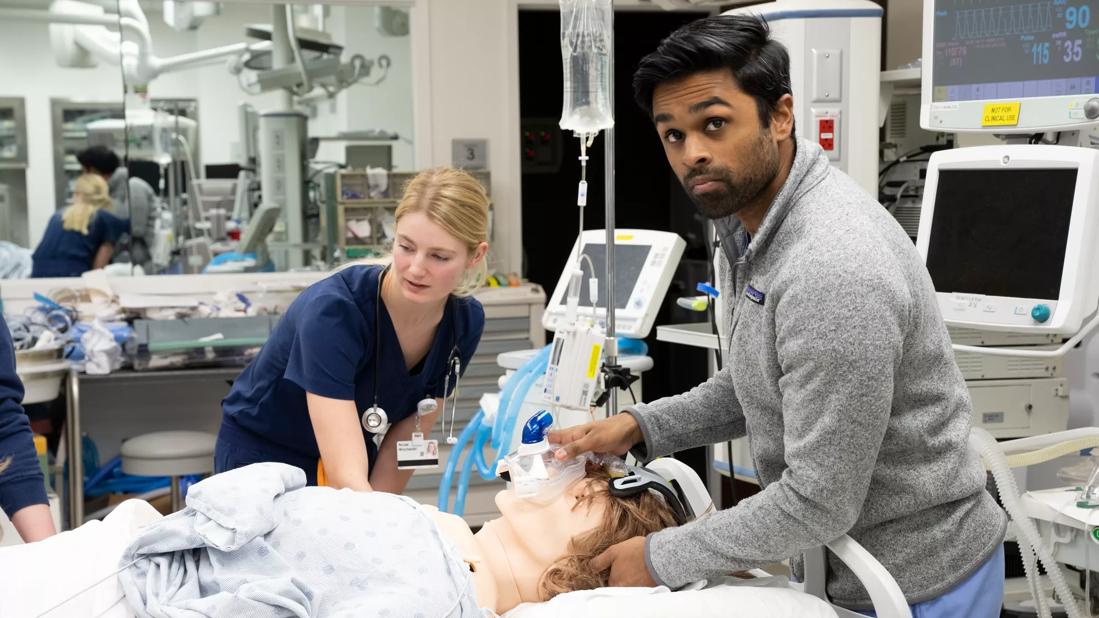Computerized mannequins, mock patient scenarios enhance clinical training

Cleveland Clinic’s Simulation and Advanced Skills Center (SASC) has been providing a broad range of multimodal simulation training and assessment opportunities for more than a decade. The center, which streamlines all of the institution’s simulation activities into one department, provides a broad range of multidisciplinary clinical scenarios designed to educate caregivers.
Advertisement
Cleveland Clinic is a non-profit academic medical center. Advertising on our site helps support our mission. We do not endorse non-Cleveland Clinic products or services. Policy
Nurses are the single largest group of simulation users. Beginning with orientation and onboarding and extending throughout their careers, Cleveland Clinic nurses of all experience levels receive training and undergo competency testing on a variety of skills using task trainers, high-fidelity manikins and standardized patients.
Nichole Kelsey, PhDC, MSN, RN, CHSE-A, Simulation Education Specialist, explains that the scope of Cleveland Clinic’s SASC modalities sets it apart. “We offer all aspects of training – from basic skills to tracheostomy care to mobility,” she says.
For the annual pediatric nurse competency, nurses have recently begun the groundbreaking practice of using standardized patients in simulation scenarios of caring for autistic patients. Maureen Washock, BSN, RN, CPN, Nursing Professional Development Specialist, says there is a significant need for education regarding autistic patients, and nurses have expressed a desire for training in this area.
Using a standardized patient – an actual person trained to act as a non-neurotypical patient – nurses undergo simulation training to recognize signs of escalating behavior. They then work to de-escalate the situation by taking mitigating steps like removing extra stimuli and minimizing their own presence.
“This is an opportunity for nurses to practice in an environment that is safe and where no harm can be done to actual patients,” Washock explains. “Simulation is a safe way to experiment with different approaches. The tactics that work can then be taken back and applied to the bedside.”
Advertisement
Every simulation is accompanied by a structured debriefing that includes feedback from the standardized patient. These conversations help nurses learn more about how they can impact patients’ experiences in the future.
“We try to create scenarios that will apply to everyone in a meaningful way,” Washock says. “Scenario-based learning keeps everyone engaged.”
In an effort to reinforce critical skills, teamwork and documentation practices in a typical environment with actual equipment, the SASC has been implementing mock codes at various locations throughout the hospital system.
“We have been getting an increasing number of requests for these simulation scenarios,” says Kimberly Sherry, RN, MSN, PCCN, EMT, Program Manager of the AHA Simulation and Resuscitation Department. “The program has grown tremendously as more people are seeing the benefits.”
There are 15 facilitators for the mock codes, which began at main campus in 2009 and were later implemented in Cleveland Clinic’s regional hospitals in 2018.
Although some of the mock codes are expected, others are a surprise. These exercises – which may be conducted anywhere in the hospital environment, including skyways and lobbies – use high-fidelity mannequins that allow clinicians to monitor the “patient’s” pulse, heart rhythm, and more. The goal of these purely educational events is to give teams a chance to practice skills in their regular environment using actual equipment.
“Mock codes lead to valuable discussions and opportunities for improvement,” explains Sherry. “They also help to identify ‘latent threats’ such as missing or faulty equipment or call system failures – anything that could compromise patient safety.”
Advertisement
In 2021, approximately 3,000 caregivers participated in 572 mock codes held throughout Cleveland Clinic’s Northeast Ohio locations.
Advertisement
Advertisement

Neurology nursing calls for skill, emotional intensity and more

Nurses play a vital role in helping patients manage the chronic disease in inpatient and outpatient settings

A multitude of subspecialities offer versatility, variety

Transport nurses prepare to manage all patients and acuity levels

Delivering specialized care and education that improves outcomes

As robotics in the OR grows, so does the role of nurses

The fast-paced, high-tech field requires critical thinking and interpersonal skills to provide patient-centered care

Developing the perioperative caregivers of the future